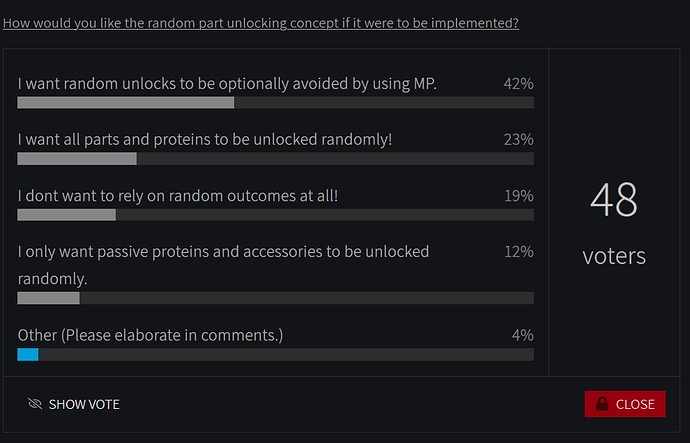The results from the community polls show an interesting breakdown:
Now obviously we do not need to follow this like the Bible, but it raises some interesting points. I think overall, there doesn’t seem to be strong favour for the random unlocks, and some comments also made good points against the random unlock system. However, it does seem that people like the idea of still adding some form of progression to the organelle system.
Another alternative system we’ve had floating around is the “Price Reduction System” (that’s the best name I can think of for it). Basically, the first copy of a “Protein Organelle” costs 100MP, but all subsequent copies cost a reduced amount (such as 40MP). Coincidentally, I think this is what the 42% of people voted for (though I’m not sure). This system reflects the same idea that first evolving a new chemical or protein is evolutionarily “difficult”, but replicating it is evolutionarily easy. It also incentivizes people to find solutions using parts they already have before evolving new ones. However, it takes away all the randomness. Another cool plus, we can still have a use for assimilating foreign cells or DNA. Instead of assimilation of foreign cells or DNA having a small chance to unlock new Proteins, assimilation has a small chance of giving a MP cost discount to the first copy of a new Protein (making it 40MP instead of 100MP). For example if you assimilate a bacteria with thylakoids and you dont have thylakoids, you have a small chance to get a 60MP discount to your first copy of Thylakoids, making your first copy cost the same as all following copies.
What are your thoughts?
